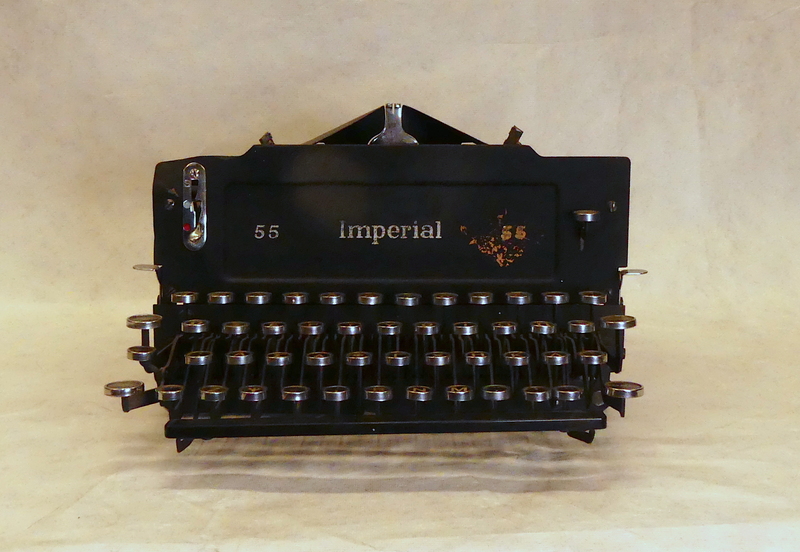Typewriter
This typewriter is among many that were used for general administrative work at Canterbury College during the mid-twentieth century. For a skilled typist at the time, composing a document by typewriter could be up to four times faster than by hand. The efficiency of this technology proved particularly useful within the classroom as it reduced the time spent on repetitive tasks, such as creating exercise worksheets for students. However, unlike those used for subjects such as English Literature, this typewriter is fitted with a Greek keyboard. It is believed that Miss Marion Steven, former lecturer in Classics, used it to create basic teaching and learning resources for her classes.
The changes Steven brought to teaching the subject of Classics at Canterbury College can be credited (in part) to her passion for classical archaeology. During 1944-1977, Steven incorporated her detailed accounts of time abroad, and her collection of photographs and ancient artefacts, into the teaching curriculum. From formally presented worksheets to historical objects over 2,000 years old, Steven transformed the experience of studying Classics into a journey through the lives of ancient civilisations.
Steven’s contribution to Classics extended far beyond her teaching career. Today, the original Canterbury College site on Worcester Street is home to a collection of Greek, Roman, Egyptian and Near Eastern cultural artefacts, generously donated by Steven in 1957. Located in the old Chemistry building, the James Logie Memorial Collection is used by students and staff of the University of Canterbury for lectures and tutorials. Subjects from classics to finance continue to incorporate the legacy of Miss Marion Steven and her teaching and learning resources into their curriculum.

